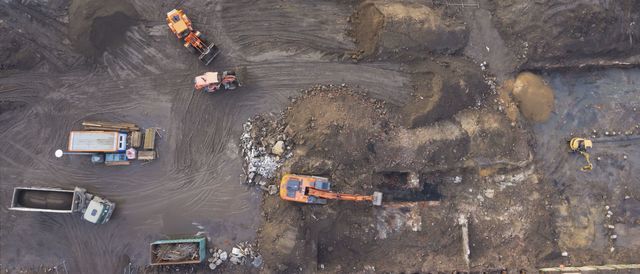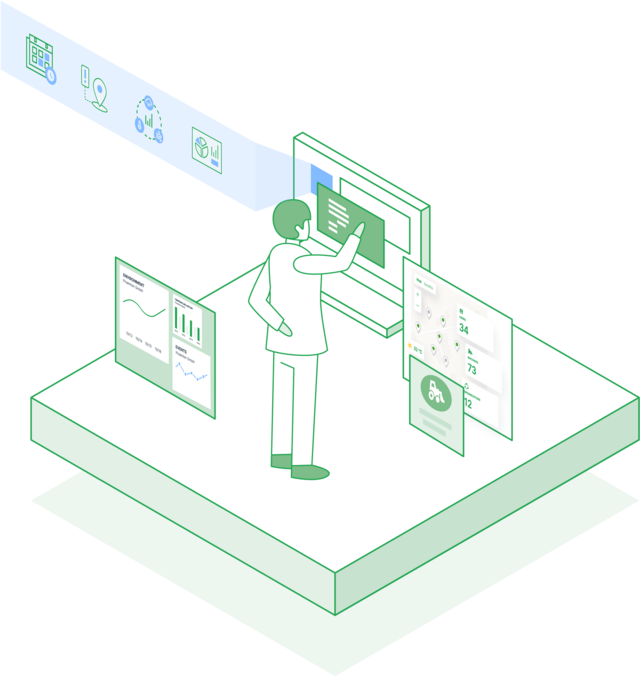Renting machinery... and its data
The unresolved problem in the construction industry.
Capacity management of construction equipment is essential to construction project profitability. Owning all the equipment you might need to cover all your projects under peak demand is not feasible. On the other hand, renting all the equipment can lead to other undesirable effects, like project delays or increased costs. Therefore, it is impossible to discard equipment rental completely, but it is critical to maintain a healthy mix of owned vs. rented equipment.
On the other hand, the construction industry is already diving into Industry 4.0 initiatives and mainly digitizing their business processes on top of sensor data collected on the field. Though heavy equipment is not one of the main costs of running a job site, it is one of the most significant risks for project delays and unexpected costs. So gathering live data from this equipment is key to starting the digitization journey as it delivers value quickly.
Unfortunately, suppose a construction company does not own a piece of equipment. In that case, it can neither access its telemetry data nor integrate it in its digitized business processes and data from its machinery.
There is a digitization gap of construction processes when rented equipment is involved. This article explains how this gap could be closed from the technical perspective and the ecosystem perspective.
Rental companies
Relationships between lessor and lessee are managed through a time-bound rental contract. It has a start and end date and involves specific assets that are rented.
Imagine that all heavy equipment rental companies could hand their lessees the machine data produced during a contract's time frame by the equipment involved in the contract. This seems easy but requires fine-grained access management to machine data that is fully GDPR compliant and deliver the data securely and privately.
Rental companies need to step up to provide their customers with these capabilities. Otherwise, the digitization of the construction industry won't be possible across all business processes. We think this is a game-changer in the construction industry, where many companies rent all or most of their equipment.
But rental companies' business is not building software solutions for the digitization of business processes. And obviously, we do not expect them to do so.

Solution providers and standards in the construction industry
Such capabilities should be provided by software companies in the fleet management space. But in a thriving ecosystem of the construction industry, standards are needed to ensure the interoperability of the different solutions in the market and the seamless exchange of information between agents in the ecosystem.
Failing to have proper standards will raise the costs for construction companies to realize their digitization efforts. Until now, the construction industry has been able to push the AEMP 2.0/ISO 15143-3 standard to access basic machine data in a standard way no matter the telemetry solution provider. And there is an ongoing improvement effort of AEMP by the Mechanical Engineering Industry Association (VDMA) via the Machines in Construction (MiC 4.0) initiative.
None of these standards does explicitly deal with the machine rental use case. The good news is that the standard only defines how to access the machine data and the data format. In other words, the specification is open enough that it could be used to implement different use cases on top of it, being the machine rental case one of them.
Filling the digitization gap in the construction industry
Proemion, as an independent mixed fleet solution provider, with more than 30 years of experience providing telemetry solutions to off-road vehicles, is capable of bridging the digitization gap between rental and construction companies.
Our solution is ready for rental companies to define fine-grained access to machine data via AEMP. It ensures that equipment rental customers will only be able to access the data of the machines they rent. And that they only access the data produced during the rental agreement. This avoids any GDPR violation that would expose how some other customer has been using the same machine in another period.
Because the solution is built on top of AEMP, we ensure that any construction company acting as the lessee will include rented equipment as part of their business processes. Thus, they enable complete digitization without additional IT investments, whether the equipment is owned or rented.
Conclusions
To fully enable the digitization of the construction industry, equipment rental companies need to provide their machine data to their lessees securely and privately compliant with GDPR. This means that lessees should only be able to access the rented equipment data that has been produced during the rental agreement.
The only standard means that exist to date to share machine data across different telemetry providers, OEMs, and IT solutions is AEMP 2.0/ISO 15143-3. Ideally, any solution that wants to fit in the construction ecosystem should be built on top of this standard.
Proemion has built a solution based on the AEMP standard that bridges the digitization gap of construction processes when rented equipment is used.

Request a demo of our solution and start bridging the gap.
